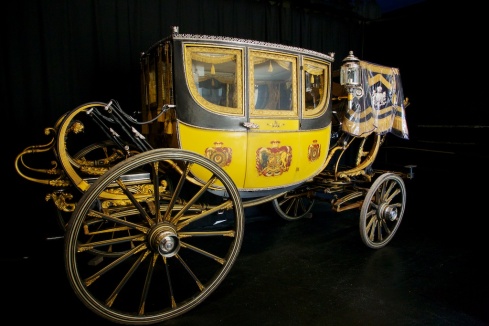Today is the Solemnity of the Most Holy Trinity - a few images posted by Gordon Plumb on the Medieval Religion discussion group:
York Minster, sXXVIII, 4a, c.1450:
Leicester, Jewry Wall Museum, Roundel showing Trinity crowning Mary, late 15th century.:
York, Holy Trinity, I, 1c, the same subject of c1470:
York, Holy Trinity, I, 2c, Trinity with Christ as Corpus Christi":
Stamford, Browne's Hospital, sII, Throne of Grace or Gnadenstuhl Trinity, c.1475::
Greystoke, St Andrew, Cumbria, sIII, 2b, Trinity shield:
Salle, St Peter & St Paul, I, 2d, angel holding Trinity shield:
Prof Maddy Gray added a note about the repainted Trinity at St Teilo's chuirch now re-erected and restored at the Welsh National History Museumwith a link to the following account of that painting:
and added that originally the fragmentary wall painting was identified as a Christ in Majesty and it had to be repainted when the text at the bottom was identified
As an addendum to the images in glass John Dillon posted some later medieval images of the Trinity in other media:
a) The Trinity (at centre) as depicted on a later thirteenth-century altarpiece (1260s) from Soest now in the Gemäldegalerie in Berlin (image greatly expandable):
b) The Trinity as depicted in an earlier fourteenth-century fresco (1317 or later) in Perugia's chiesa di Sant'Agata:
Detail view:
c) The Trinity (upper right) as portrayed by Michiel van der Borch in an earlier fourteenth-century copy (1332) of Jacob Maerlant's Rijmbibel (Den Haag, Museum Meermanno, cod. 10 B 21, fol. 118r):
d) The Trinity as portrayed in the earlier fourteenth-century Hours of Jeanne of Navarre (ca. 1336-1340; Paris, BnF, ms. Nouvelle acquisition latine 3145, fol. 11r):
e) The Trinity as depicted in the mid- to later fourteenth-century Breviary of King Charles V (betw. 1347 and 1380; Paris, BnF, ms. Latin 1052, fol. 154r):
f) The Trinity as portrayed in a mid-to later fourteenth-century copy (before 1376) of Guiard des Moulins' Bible historiale (Paris, BnF, ms. Français 161, fol. 1r):
g) The Trinity as portrayed on a late fourteenth-century boss in the west porch of Peterborough Cathedral (cf. C. S. Lewis' Christ-figure Aslan, often a maned lion, sometimes a bird):

i) The Trinity as depicted by Antonio Martini of Atri in an early fifteenth-century fresco (ca. 1410) in the basilica cattedrale di Santa Maria Assunta in Atri (TE) in Abruzzo:
I would add to these examples the fact that in the late middle ages the Trinity were often depicted crowning the Blessed Virgin Mary as opposed to that act being performed by Christ alone.
This
boss under the late fourteenth century western porch shows the Trinity, with the Father as
the sun holding up Christ's wounded hand whilst the Holy Spirit takes
the form of a dove.
I would add that this is an image I have not seen before and it is quite extraordinary - Clever Boy
h) The Trinity as portrayed on an early fifteenth-century boss (ca.
1402-07) in the south porch of the church of St. John the Baptist,
Peterborough:
i) The Trinity as depicted by Antonio Martini of Atri in an early fifteenth-century fresco (ca. 1410) in the basilica cattedrale di Santa Maria Assunta in Atri (TE) in Abruzzo:
Detail view:
j)
The Trinity as depicted in an early fifteenth-century panel painting
(ca. 1410 or ca. 1423-25) by Andrei Rublev in the State Tretyakov
Gallery, Moscow:
k)
The Trinity as depicted by Masaccio in an earlier fifteenth-century
fresco (ca. 1425-27) in the left aisle of Florence's chiesa di Santa
Maria Novella:
l)
Jerome's vision of the Trinity (at left St. Eustochium; at right, St.
Paula of Rome) as depicted by Andrea del Castagno in an earlier
fifteenth-century fresco (ca. 1444-1445) in the chapel of Girolamo
Corboli in Florence's chiesa della Santissima Annunziata:
m) The Trinity as portrayed on a fifteenth-century boss in the south porch of the church of St Margaret, Lowestoft (Suffolk):
n) The Trinity as portrayed in a later fifteenth-century apse fresco in the chiesa di San Nicolao in Giornico (canton Ticino):
I would add to these examples the fact that in the late middle ages the Trinity were often depicted crowning the Blessed Virgin Mary as opposed to that act being performed by Christ alone.
In the sixteenth and seventeenth centuries reformation attitudes to depictions of the Trinity were strong, based on the Second Commandment, and many such images were doubtless destroyed.






